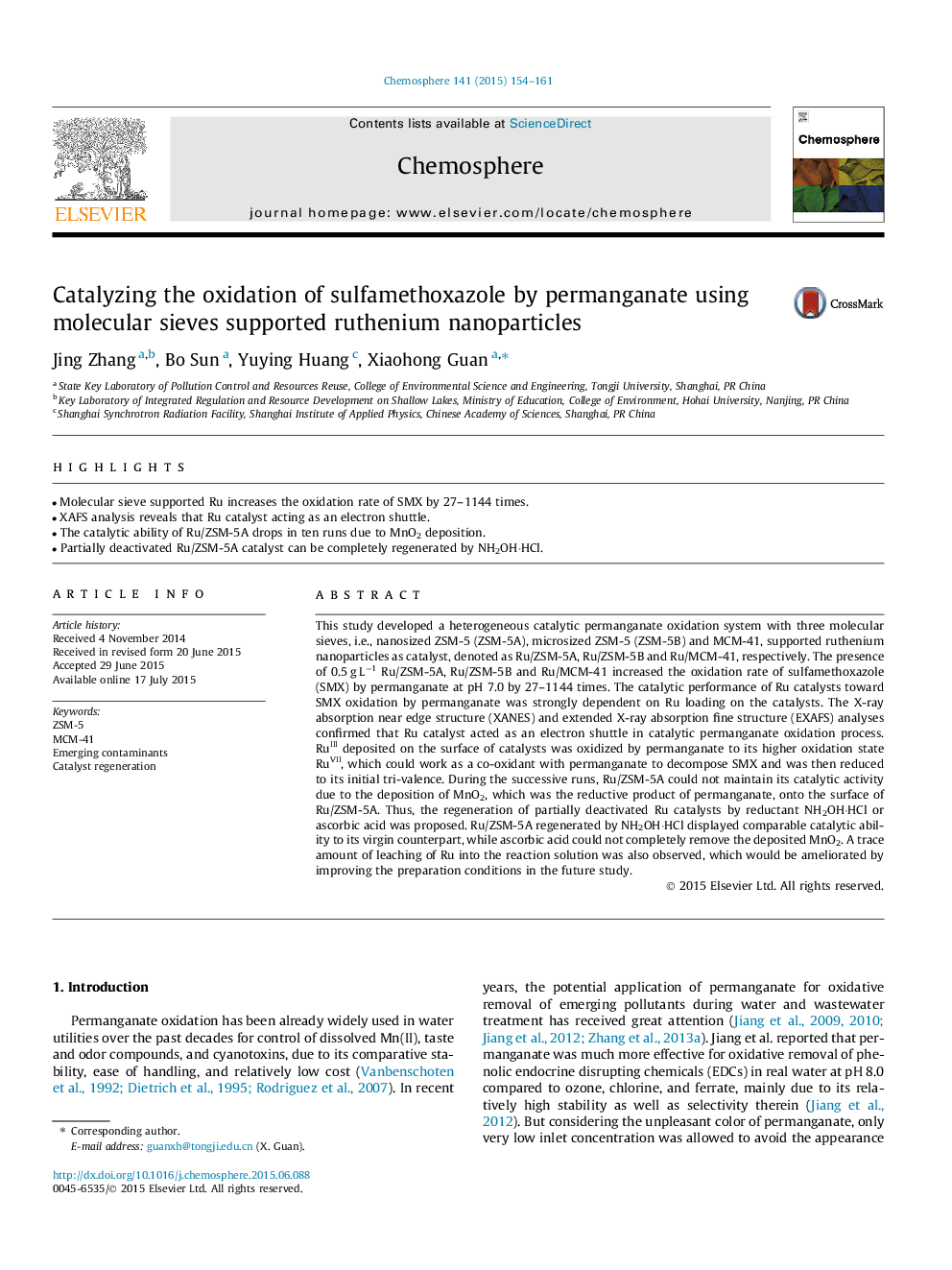| کد مقاله | کد نشریه | سال انتشار | مقاله انگلیسی | نسخه تمام متن |
|---|---|---|---|---|
| 6307357 | 1618830 | 2015 | 8 صفحه PDF | دانلود رایگان |
- Molecular sieve supported Ru increases the oxidation rate of SMX by 27-1144 times.
- XAFS analysis reveals that Ru catalyst acting as an electron shuttle.
- The catalytic ability of Ru/ZSM-5A drops in ten runs due to MnO2 deposition.
- Partially deactivated Ru/ZSM-5A catalyst can be completely regenerated by NH2OHâ
HCl.
This study developed a heterogeneous catalytic permanganate oxidation system with three molecular sieves, i.e., nanosized ZSM-5 (ZSM-5A), microsized ZSM-5 (ZSM-5B) and MCM-41, supported ruthenium nanoparticles as catalyst, denoted as Ru/ZSM-5A, Ru/ZSM-5B and Ru/MCM-41, respectively. The presence of 0.5 g Lâ1 Ru/ZSM-5A, Ru/ZSM-5B and Ru/MCM-41 increased the oxidation rate of sulfamethoxazole (SMX) by permanganate at pH 7.0 by 27-1144 times. The catalytic performance of Ru catalysts toward SMX oxidation by permanganate was strongly dependent on Ru loading on the catalysts. The X-ray absorption near edge structure (XANES) and extended X-ray absorption fine structure (EXAFS) analyses confirmed that Ru catalyst acted as an electron shuttle in catalytic permanganate oxidation process. RuIII deposited on the surface of catalysts was oxidized by permanganate to its higher oxidation state RuVII, which could work as a co-oxidant with permanganate to decompose SMX and was then reduced to its initial tri-valence. During the successive runs, Ru/ZSM-5A could not maintain its catalytic activity due to the deposition of MnO2, which was the reductive product of permanganate, onto the surface of Ru/ZSM-5A. Thus, the regeneration of partially deactivated Ru catalysts by reductant NH2OHâ HCl or ascorbic acid was proposed. Ru/ZSM-5A regenerated by NH2OHâ HCl displayed comparable catalytic ability to its virgin counterpart, while ascorbic acid could not completely remove the deposited MnO2. A trace amount of leaching of Ru into the reaction solution was also observed, which would be ameliorated by improving the preparation conditions in the future study.
Journal: Chemosphere - Volume 141, December 2015, Pages 154-161
